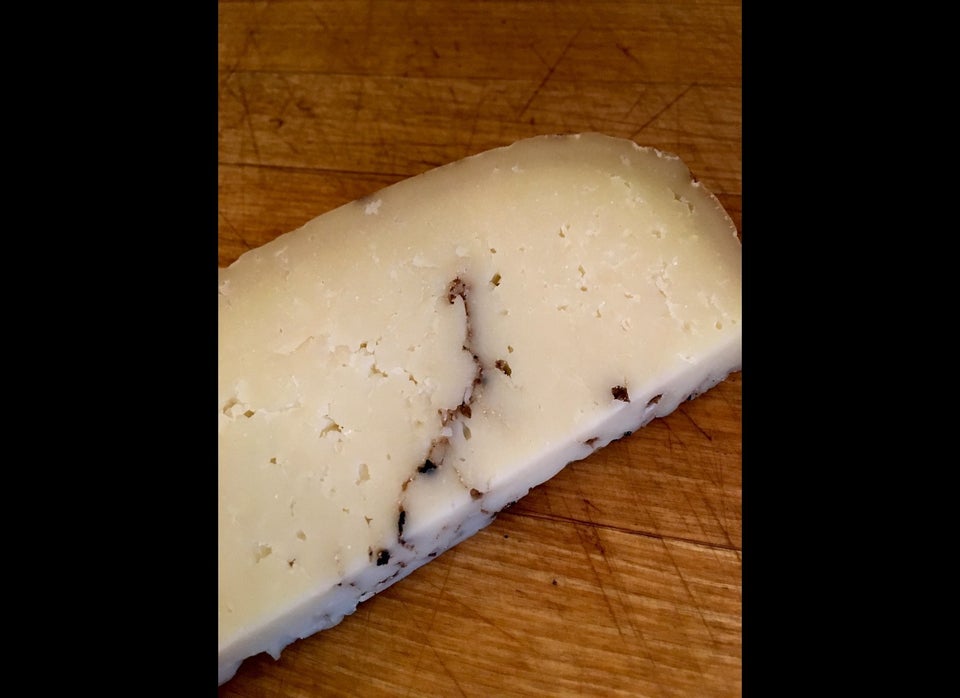All you need to know about the classic Roman dish of pasta cacio e pepe you can find on the blog of Veruska Anconitano, an expatriate Italian living in Dublin. There's an English version of the recipe, but even if you use it you should also look at the Italian original, which is more dogmatic and colorful: the qualities that draw me to Ms. Anconitano's writing. (With traditional Italian cooking, a strict approach is important: Variations can be wonderful, but the original dishes must never be lost.)
Her version - in either language - is simpler than most of the recipes you'll find in books or on line, especially those written by people who feel they need to put their stamp on a dish that needs no adjustment. It uses just pecorino romano cheese (no parmesan), black pepper and pasta-boiling water, and it employs no technical wizardry to create some sort of creamy cheese sauce: cheese, water and pepper join up with the hot pasta in a bowl and that's about it. Ms. Anconitano is of the firm, firm view that the "delicate cream" sauce touted in many versions isn't merely wrong-headed but doesn't exist.
Having said that, a couple of weeks ago I myself adjusted the traditional recipe in a key way: I used not pecorino romano but pecorino Moliterno al tartufo, a mature Sardinian sheep's milk cheese that is larded with a paste of truffles, enough to perfume the entire cheese as it ages. I know it sounds like a gimmick, but it is a fine thing whose basis is good raw-milk pecorino. You probably won't find such a cheese in the supermarket, but you might in a good specialist cheese shop. If you do, buy a piece and make this dish (if you can stop "tasting" it when you get it home). There are several truffled cheeses around, some of them artificially flavored and not all made of 100-percent sheep's milk (which is important in this dish). Even among the sheep cheeses, some are quite soft; the kind you need is sufficiently aged and firm/crumbly that it can be grated on the small holes of a box grater without forming a mush.
For two portions, I grated 100 grams (3-1/2 ounces) of this cheese and set it aside. I (coarsely) ground into a serving bowl enough black pepper to yield a generous half tablespoonful, which is less than you'd use if you weren't being careful not to overwhelm the flavor of truffles. Along with two plates for our dinner, the bowl went into the oven to warm at 150º F (65º C), which made the pepper all the more aromatic. I then boiled 200 grams (7 oz) of thick spaghetti in plenty of salted water. When it was done, I removed a cup (250 ml) of the cooking water and kept it at the ready, then used tongs to transfer the spaghetti to the serving bowl: Do not drain it in a sieve, because water is the sole liquid element of this dish.
I added the cheese to the pasta and used the same tongs to combine the ingredients, making sure to scoop up pepper from the bottom of the bowl (yes, I could have added the pepper to the pasta rather than the other way around, but I wanted it warmed in the serving dish). Little by little, I added perhaps half of the reserved pasta-cooking water (still very hot, salty and a little starchy), until the noodles were pretty well coated with cheese - one could almost say "cheese sauce" because the water combines with the melting pecorino, as well as loosening what would otherwise be a dry dish (note that it lacks butter or oil). Especially with this kind of pecorino (which is not aged with a view to being grated to a near powder), I think it is inevitable that some cheese, once melted, will hang around on the bottom of the serving bowl, so be sure to spoon it onto your portion of spaghetti.
The truffles' contribution approached my ideal for this ingredient, in terms of both flavor and aroma. This was because these had been fixed in the cheese as it developed. And because it was a properly mature pecorino, it gave the dish solid bona fides as a good, satisfying, old-fashioned spaghetti cacio e pepe. And I think even a traditionalist would permit us those truffles.
